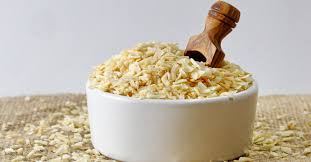Dried Onion
Scientific Name: Allium cepa
English Name: Dried Onion
Botanical Description
Onion (Allium cepa) is a biennial herbaceous plant from the Amaryllidaceae family. It grows as an underground bulb composed of thick, fleshy leaves that store water and nutrients. The plant has tubular green leaves and produces small white or purple flowers arranged in a spherical cluster. When onions are dried, the moisture is removed from slices or whole bulbs to preserve their flavor and nutritional value.
Types
Dried White Onion: Has a sharp taste and light color.
Dried Red Onion: Slightly sweet flavor with a darker color.
Dried Yellow Onion: The most commonly used due to its balanced flavor.
Onion Powder: A ground form used as a seasoning.
Onion Flakes: Used in cooking and ready-made food products.
Health Benefits and Medicinal Uses
Dried onions provide numerous health benefits, including:
Antibacterial and Antiviral Properties: Help fight infections and strengthen immunity.
Heart Health Improvement: Reduce bad cholesterol levels and enhance circulation.
Blood Sugar Regulation: Improve insulin sensitivity in the body.
Antioxidant Effects: Contain compounds that protect cells from damage.
Digestive Health Support: Promote beneficial gut bacteria and aid digestion.
Culinary and Medicinal Uses
Used in cooking as a substitute for fresh onions, added to soups, sauces, and seasonings.
Included in dietary supplements for digestive and immune health benefits.
Used in traditional medicine for treating colds and infections.
Applied in skincare to combat wrinkles and acne.
Cultivation Methods
Grown in fertile, well-drained soil, preferably sandy loam.
Requires a mild to cool climate, thriving best at temperatures between 12-24°C.
Needs regular watering, with reduced irrigation as bulbs mature to prevent rotting.
Harvested when leaves begin to wither, then dried under sunlight or industrial methods for preservation.
Medicinally Used Part
Dried onion bulbs or onion powder are used for therapeutic and nutritional purposes.
Planting Season
Planted in autumn (September – October) in temperate regions.
Planted in spring (February – March) in colder regions.
Active Compounds
Organosulfur Compounds (Allicin): Antibacterial and anti-inflammatory properties.
Flavonoids: Powerful antioxidants.
Vitamins C and B6: Support immune function and overall health.
Minerals such as Potassium and Magnesium: Promote heart and vascular health.
Export details worldwide
Package Weight: 20 kg
Types: Dried slices and powder
Packaging: Sacks or cartons
Container: 20
Origin: Egypt

Powder






